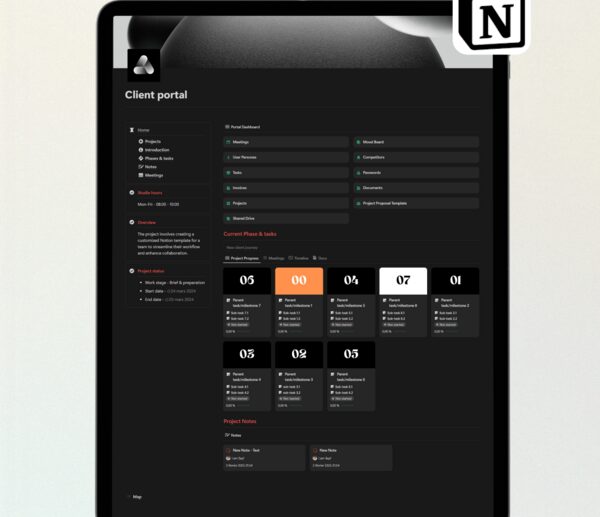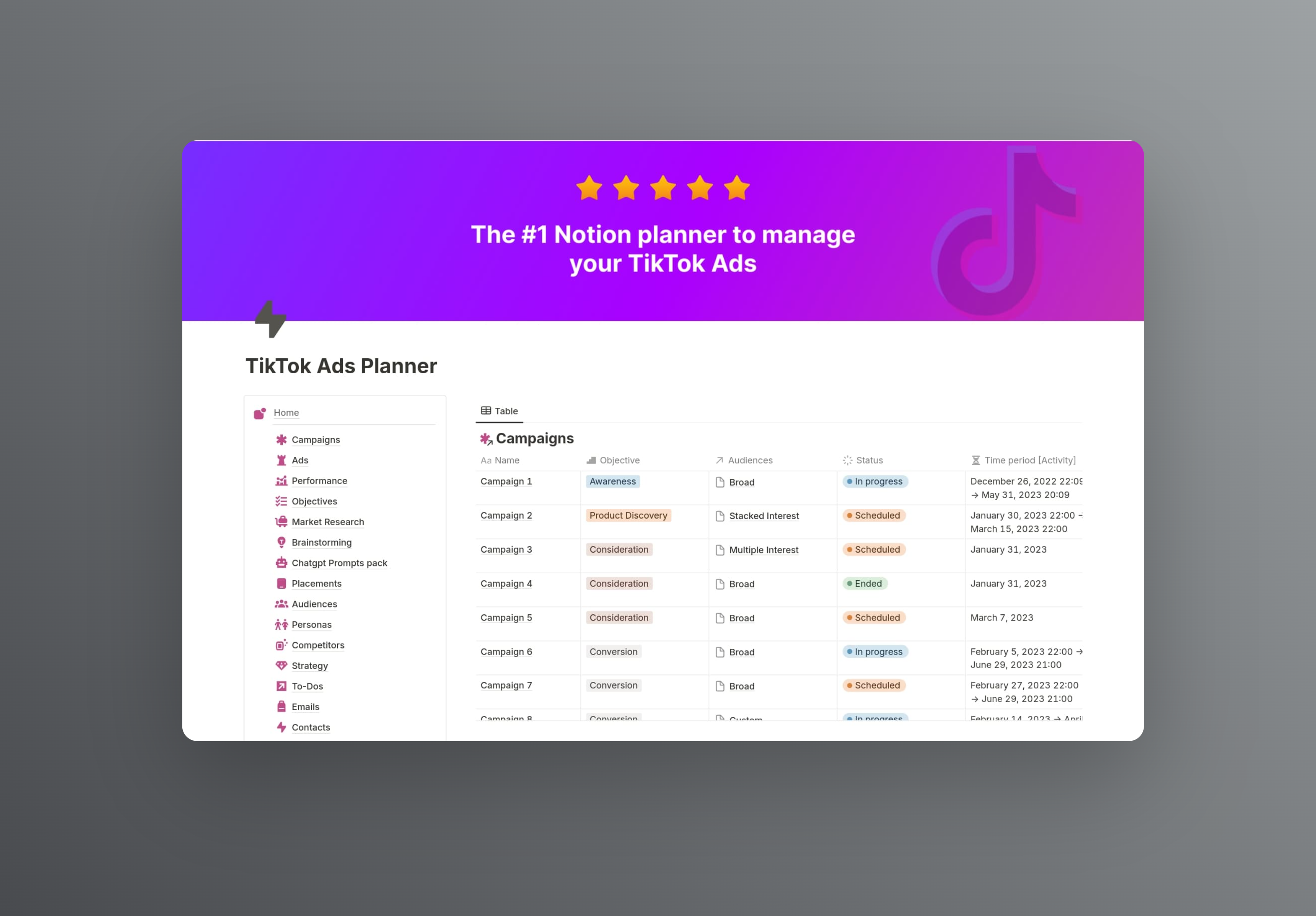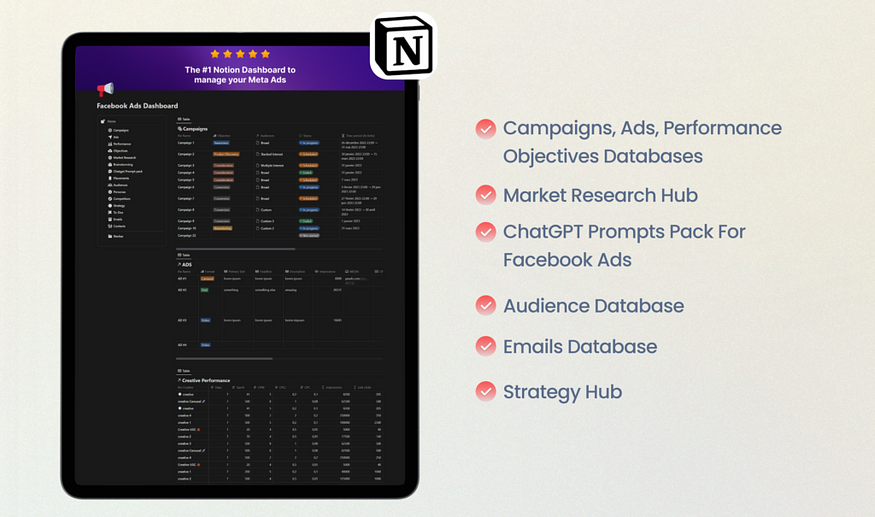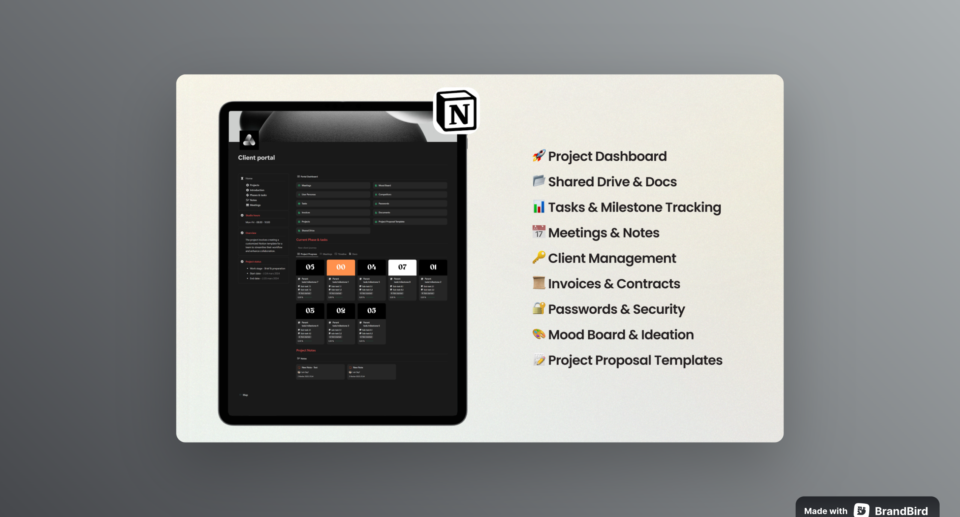Client Portal: 5 Features Clients Actually Use (2025)

Are you a business owner or a service provider who has invested in a client portal only to find that your clients rarely use it? You’re not alone. Many businesses struggle to make their client portals a go-to resource for their clients. However, a well-designed client portal can significantly enhance client satisfaction and streamline your business operations.
The question is, what makes a client portal truly valuable to clients? What features do clients actually use and appreciate?
In this blog post, we will explore the top five features that clients find most useful in a client portal. By focusing on these features, you can build a client portal that your clients truly value and interact with regularly.
Table of Contents
Template Overview

A well-designed client portal should be a one-stop-shop for your clients where they can find everything they need related to your services. The key is to make it user-friendly, secure, and feature-rich.
Here are the five features that clients actually use and value in a client portal:
1. Secure Document Sharing and Storage

Why It Matters
Clients need a secure place to share and store important documents such as contracts, invoices, project files, and reports. A client portal that offers secure document sharing and storage makes it easy for clients to access their files anytime, anywhere.
How to Implement
- Use encryption to ensure that all documents are securely stored and transmitted.
- Implement role-based access control so that only authorized individuals can access specific documents.
- Provide a user-friendly interface where clients can easily upload, download, and manage their documents.
2. Real-Time Communication Tools
Why It Matters
Clients appreciate the ability to communicate with their service providers in real-time. A client portal that includes real-time communication tools such as chat, video conferencing, and messaging can significantly enhance client satisfaction.
How to Implement
- Integrate a live chat feature that allows clients to get instant answers to their questions.
- Include a video conferencing tool for virtual meetings and consultations.
- Ensure that all communication is logged and stored securely within the portal for future reference.
3. Task and Project Management
Why It Matters
Clients want to stay updated on the progress of their projects. A client portal that includes task and project management features allows clients to track the status of their projects, view deadlines, and collaborate with your team.
How to Implement
- Use a project management tool that allows clients to view project timelines, milestones, and task statuses.
- Provide a dashboard where clients can see an overview of all their active projects.
- Enable clients to add comments, upload files, and make requests directly within the project management section.
4. Billing and Payment Processing
Why It Matters
A client portal that makes it easy for clients to view and pay their invoices can save both you and your clients a lot of time and hassle. Clients appreciate the convenience of being able to make payments directly through the portal.
How to Implement
- Integrate a secure payment gateway such as PayPal, Stripe, or another trusted provider.
- Provide a section where clients can view their billing history, download invoices, and make payments.
- Send automated reminders for upcoming or overdue payments.
5. Knowledge Base and Self-Service Resources
Why It Matters
Clients often have questions that can be answered through a well-organized knowledge base. A client portal that includes a comprehensive knowledge base and self-service resources can help clients find answers to common questions without needing to contact your support team.
How to Implement
- Create a searchable knowledge base that includes FAQs, how-to guides, and tutorials.
- Organize the knowledge base into categories such as “Getting Started,” “Billing,” “Troubleshooting,” and “Advanced Features.”
- Regularly update the knowledge base based on client feedback and common support queries.
Time to Set Up
Setting up a client portal with these five features might seem daunting, but it doesn’t have to be. With the right tools and a well-thought-out plan, you can have a fully functional client portal up and running in a matter of days.
Tips for Quick Onboarding
- Choose a Reliable Client Portal Software: There are many client portal solutions available that come with pre-built features such as document sharing, communication tools, and billing. Some popular options include Zendesk, ClientPoint, and Huddle.
- Customize for Your Brand: Make sure your client portal reflects your brand’s look and feel. Customize the colors, logos, and layout to make it feel like an extension of your business.
- Test Thoroughly: Before launching, make sure to test all features thoroughly to ensure everything works smoothly. Consider a beta test with a few trusted clients to gather feedback.
Step-by-Step Guide to Using the Template
Step 1: Duplicating the Template
- Log in to your client portal software.
- Navigate to the “Templates” section and select a pre-built client portal template that includes the five key features mentioned above.
- Duplicate the template and name it according to your business.
Step 2: Customizing Dashboards
- Customize the main dashboard to include widgets for document sharing, real-time communication, project management, billing, and the knowledge base.
- Make sure the dashboard is intuitive and easy to navigate.
Step 3: Adding Tasks and Projects
- Use the project management tool within the portal to add your clients’ projects.
- Set up task lists, deadlines, and milestones for each project.
- Invite clients to view and collaborate on their projects.
Step 4: Setting Up Billing and Payment Processing
- Integrate your preferred payment gateway.
- Set up your billing section so that clients can view their invoices and make payments directly through the portal.
- Test the payment process to ensure it works correctly.
Step 5: Populating the Knowledge Base
- Create a list of common questions and answers.
- Organize the knowledge base into categories and add articles, how-to guides, and tutorials.
- Make sure the knowledge base is searchable so that clients can easily find the information they need.
Productivity Gains & Data Insights
Research shows that businesses that use well-designed client portals see a significant increase in client satisfaction and operational efficiency. According to a study by Forrester, companies that implement client portals can reduce support costs by up to 30% and increase client satisfaction by 20%.
How a Client Portal Boosts Productivity
- Reduces Email Overload: By centralizing communication within the portal, you can reduce the number of emails exchanged and keep all client interactions organized in one place.
- Streamlines Project Management: Clients can track project progress in real-time, reducing the need for frequent status update meetings.
- Enhances Security: Secure document sharing and storage ensure that sensitive information is protected, reducing the risk of data breaches.
Customizing for Your Workflow
Every business has unique needs, so it’s important to customize your client portal to fit your specific workflow. Here are some ideas for different types of businesses:
For Freelancers
- Focus on secure document sharing and real-time communication tools to keep clients updated on project progress.
- Use a simple billing section for invoicing and payments.
For Small Businesses
- Emphasize project management features to keep multiple clients and projects organized.
- Include a robust knowledge base to answer common questions and reduce support requests.
For Large Enterprises
- Implement role-based access control for document sharing and project management.
- Use advanced project management tools to handle complex projects with multiple stakeholders.
Productivity Hacks & Use Cases
Real-Life Use Cases
- A Marketing Agency: A marketing agency used a client portal to share campaign reports, schedule meetings, and manage project timelines. Clients could view real-time analytics and provide feedback directly through the portal, which improved client satisfaction and project turnaround time.
- A Law Firm: A law firm implemented a client portal for secure document sharing and real-time communication. Clients could upload legal documents securely and communicate with their attorneys through a private chat feature, which enhanced client trust and confidentiality.
Tips for Getting More Done
- Automate Routine Tasks: Use automation tools to send automated reminders for payments, project deadlines, and follow-up messages.
- Regularly Update the Knowledge Base: Keep the knowledge base up-to-date based on client feedback and common support queries to reduce the need for direct support.
Common Mistakes to Avoid
Overcomplicating the Portal
- Mistake: Adding too many features can make the portal confusing and difficult to navigate.
- Solution: Focus on the five key features mentioned and keep the interface clean and user-friendly.
Neglecting Security
- Mistake: Failing to implement robust security measures can lead to data breaches and loss of client trust.
- Solution: Use encryption, role-based access control, and regular security audits to protect client data.
Ignoring Client Feedback
- Mistake: Not gathering and acting on client feedback can result in a portal that doesn’t meet client needs.
- Solution: Regularly ask for client feedback and make necessary adjustments to improve the portal.
Maintaining & Updating Your System
Weekly Reviews
- Conduct weekly reviews to check for any issues or areas for improvement in the client portal.
- Update the project management section to reflect the latest project statuses.
Automation Tools
- Use automation tools like Zapier or Make to integrate your client portal with other business tools such as your CRM, email marketing software, and accounting system.
Keeping the Portal Up-to-Date
- Regularly update the knowledge base and self-service resources based on new client questions and feedback.
- Ensure that all software components are up-to-date to maintain security and functionality.
Conclusion
A well-designed client portal can be a game-changer for your business, enhancing client satisfaction and streamlining your operations. By focusing on the five features that clients actually use—secure document sharing and storage, real-time communication tools, task and project management, billing and payment processing, and a knowledge base and self-service resources—you can build a client portal that your clients truly value and interact with regularly.
Investing in a client portal that meets your clients’ needs not only makes their lives easier but also makes your business more efficient and professional. So, what are you waiting for? Start building a client portal that your clients will love today!
FAQs
Do I need a paid account to use a client portal software?
Most client portal software offers a free trial or a freemium version with limited features. However, for full functionality and customization, a paid account is usually required.
Can I share the client portal with my team?
Yes, most client portal software allows you to invite team members and assign them roles and permissions based on their responsibilities.
How do I ensure that my client portal is secure?
Use a reputable client portal software that offers robust security features such as encryption, role-based access control, and regular security updates.
What’s the best way to integrate a client portal with other business tools?
Many client portal software solutions offer integrations with popular business tools such as CRM systems, email marketing software, and accounting software. You can also use automation tools like Zapier or Make to create custom integrations.
Read also: Facebook Ads Dashboard: 7 Metrics you should Watch Weekly 2025










